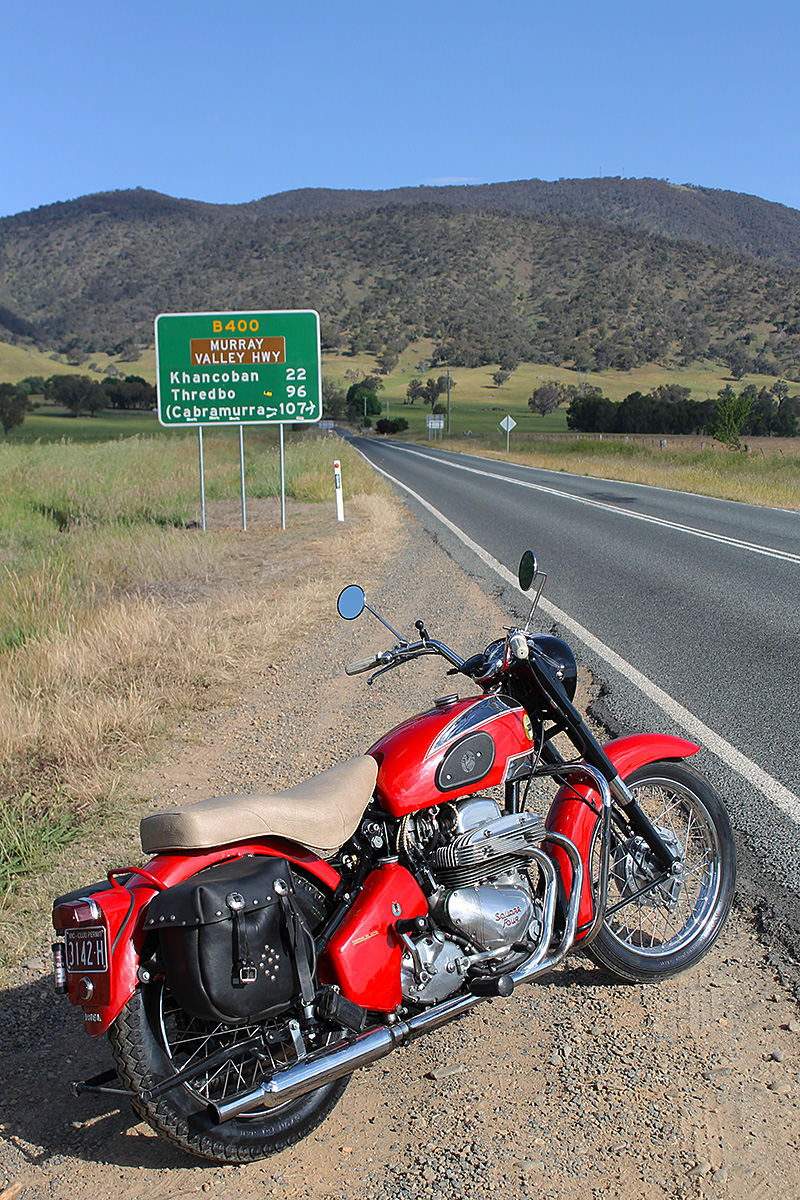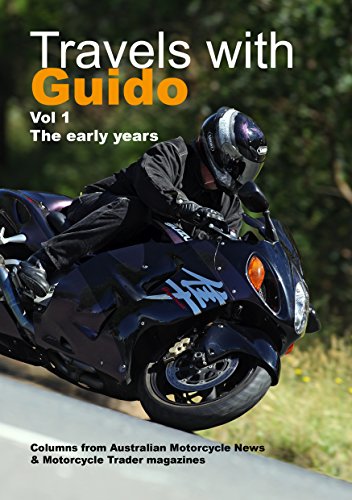Motorcycle Investor mag
Subscribe to our free email news

Ariel dreaming
(Travels with Guido series #283, by Guy ‘Guido’ Allen, Jan 2021)
Discovering a fifties super cruiser
It’s not often that you jump on a motorcycle that actually realigns your thinking or prejudices about a category. A little while back, a young Phillip White threw me the keys to his MkII (which means 1950s) Ariel Square Four.
Not only that, but he casually said, “Don’t be afraid to wind it up and see what it’ll do.” Brave words from the owner of any classic motorcycle, particularly one as complex as this. Old British bikes are not exactly famous for their willingness to accept rough handling and, really, any vehicle this age has a right to be treated with a bit of respect.
This monster has its beginnings in the late 1920s, when Edward Turner (of Triumph Bonneville fame) drafted a square-shaped four-cylinder engine – essentially two parallel twins geared together – as a ploy to find work. He succeeded and the bike became a reality (in 500cc form) for the 1930 Olympia motorcycle show in Britain.
It of course underwent a fair bit of development over the decades, with the tragic interruption of WWII. How times have changed – could you imagine a current motorcycle hanging in there, even with significant development, for thirty years?
Ariel is a long-extinct name and, while it’s been revived for a run of individually-built toys well out of reach of most of us, it really lives on in the minds of owners and a dwindling group of nutters who rode them back when they were mainstream.
By the time the fifties rolled around, the Ariel’s powerplant had grown to 995cc, which put it firmly in the super cruiser class for the day. Remember this was a time when a 650 was regarded as a big motorcycle and people spoke of litre-class bikes such as the Vincent in semi-hushed tones.
Look at the raw stats for the machine, and they’re hardly enough to get the pulse racing in your average 18-year-old. Not these days. We’re talking a weight somewhere near the 200 kilo mark and a modest 40 horsepower. However, they did claim a 100mph (160km/h) top speed.
Listening carefully to young Mr White’s instructions, I hopped aboard and failed miserably to start it. Of course he hopped on and got it going almost instantly. That’s old bikes for you – they’re fussy about who rides them.
The auld dear rumbled up the road and I reckon that double-twin exhaust note is unique. A little weird, but you could grow to love it. Once it had cantered down the road far enough to warm up properly, I took the owner at his word and cut it loose.
Well, bugger me. There’s no danger of it tearing your arms out of their sockets, but once it winds up it can pull the horizon up at a much faster rate that you’d have any right to expect. More impressive though, from where I was sitting, was just how easily it sat at decent highway speeds. It really felt like it would do 80mph (130km/h) all day, if you just gave it a chance. Whether the old seals and gaskets would hang in there with that sort of treatment is another question, but there’s no doubt this would have been a bloody impressive bit of kit in its day.
Even now it feels a bit like a modern bike. It’s comfortable and has good reserves of performance, though the braking is nothing to write home about. As I reluctantly turned around (rather than ride the 400km back to Melbourne) to give the owner back his toy, I couldn’t help thinking that I probably would have got into classic bikes a lot earlier if I’d experienced one of these.
So now I’m sitting back in the shed, wondering how in hell I’m going to find one for myself, without having to remortgage the house. And tonight I’ll be dreaming of Ariels. It’s enough to make you wonder where your life ran off the rails…
More Travels with Guido columns
(Ed's note: You can find the modern-day Ariel, which builds low-volume cars and motorcycles, here.)
-------------------------------------------------
Produced by AllMoto abn 61 400 694 722
Privacy: we do not collect cookies or any other data.

Archives
Contact




